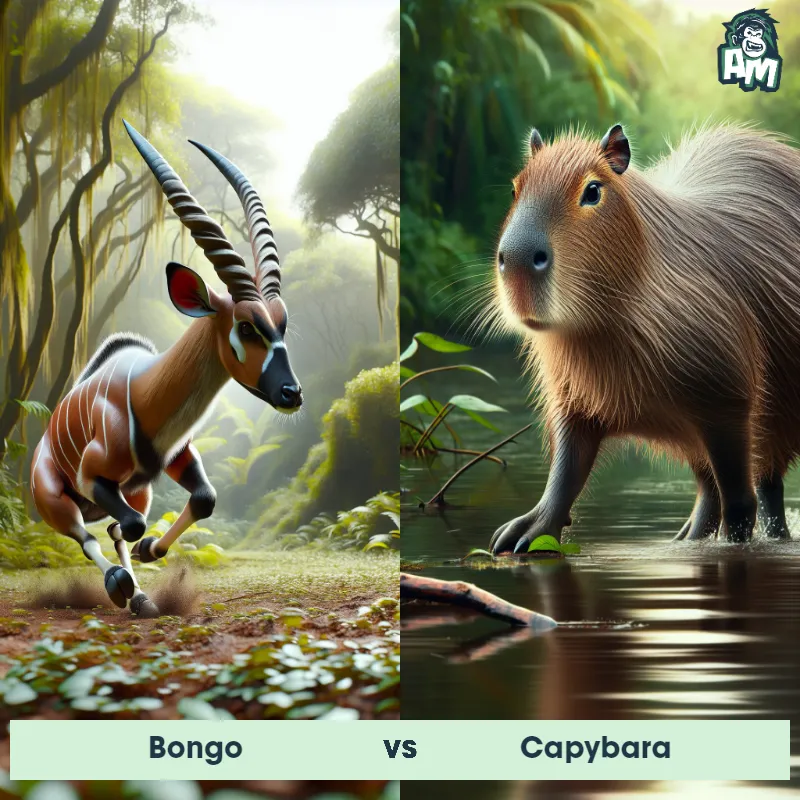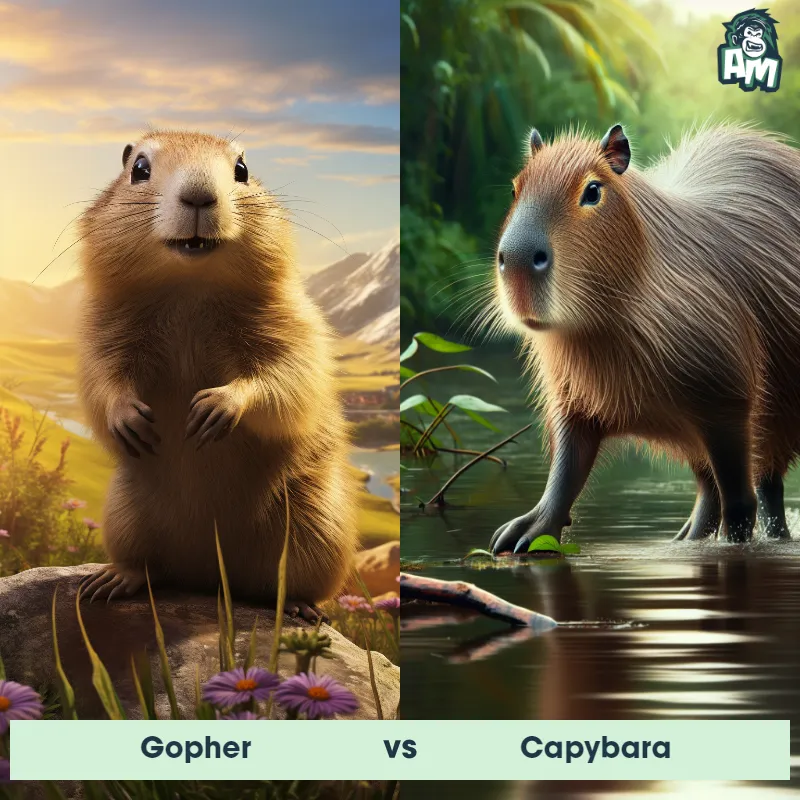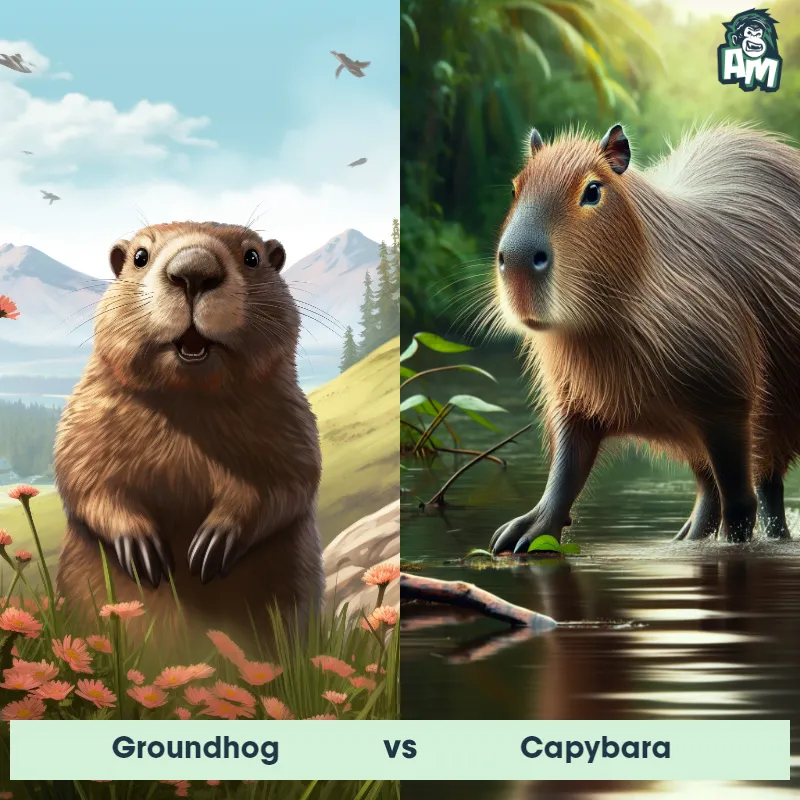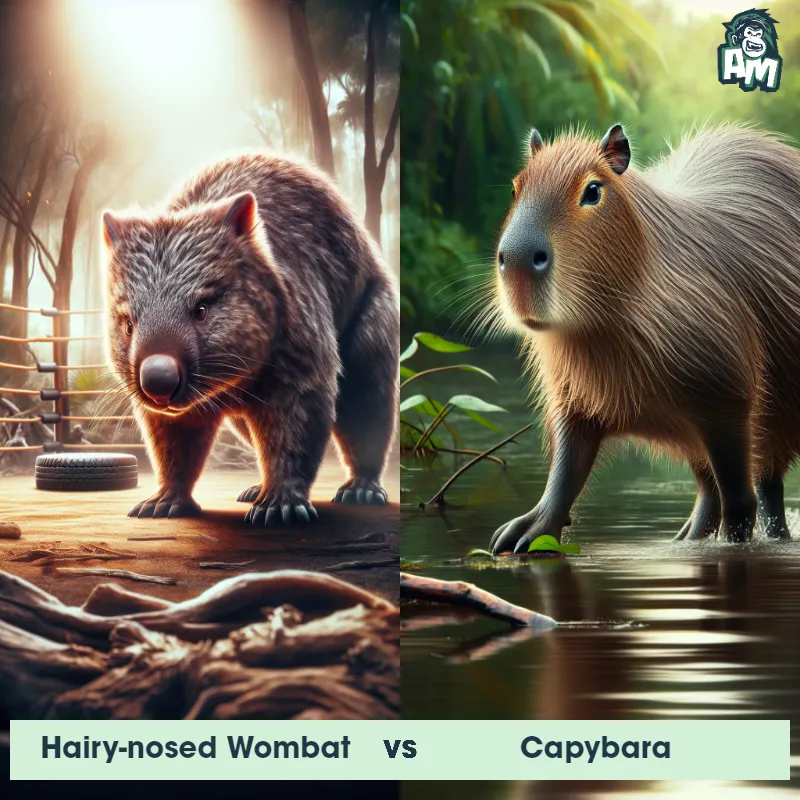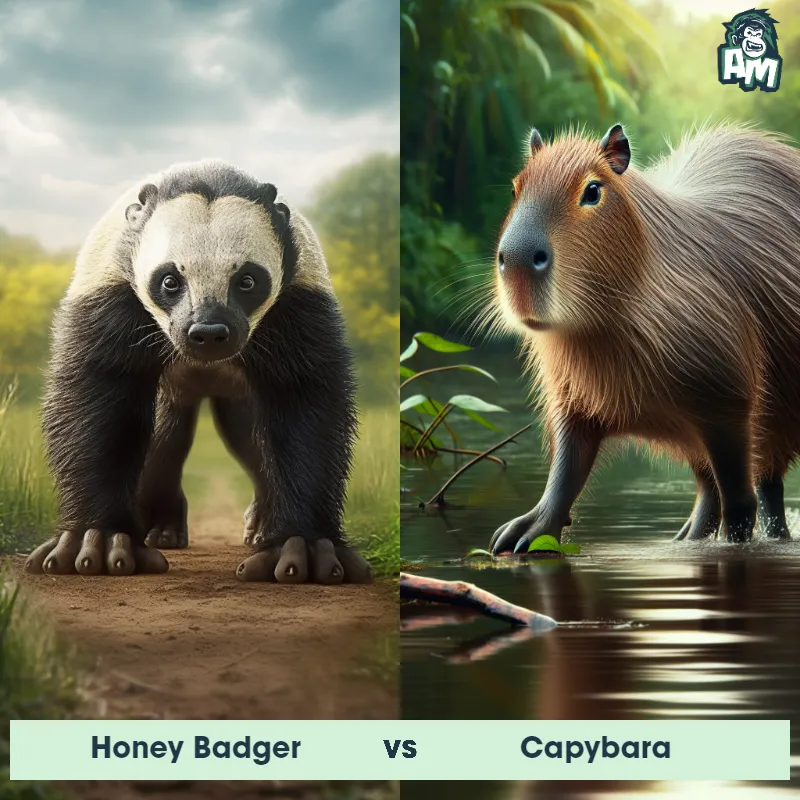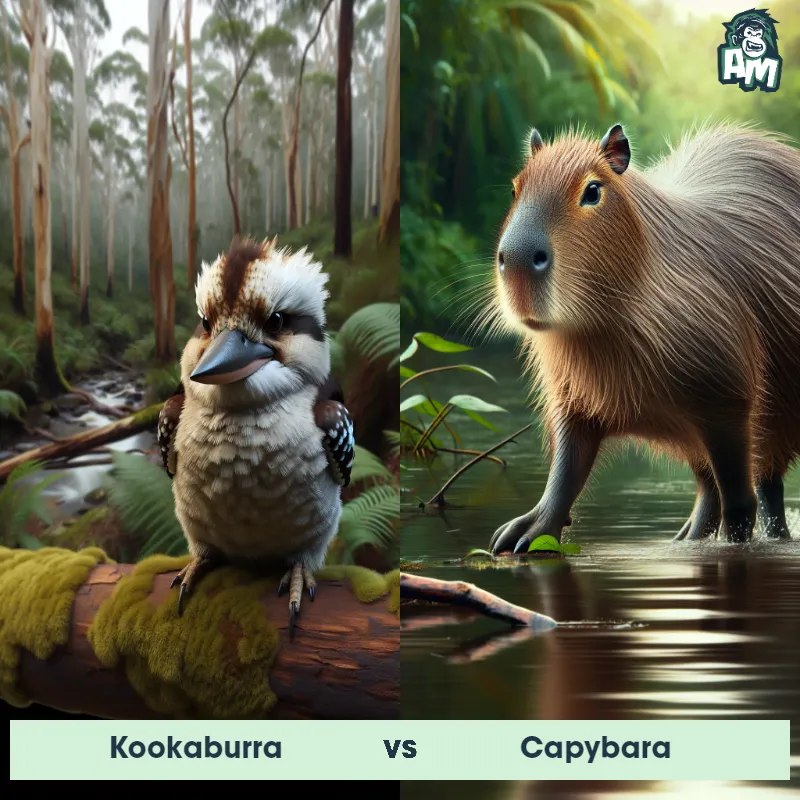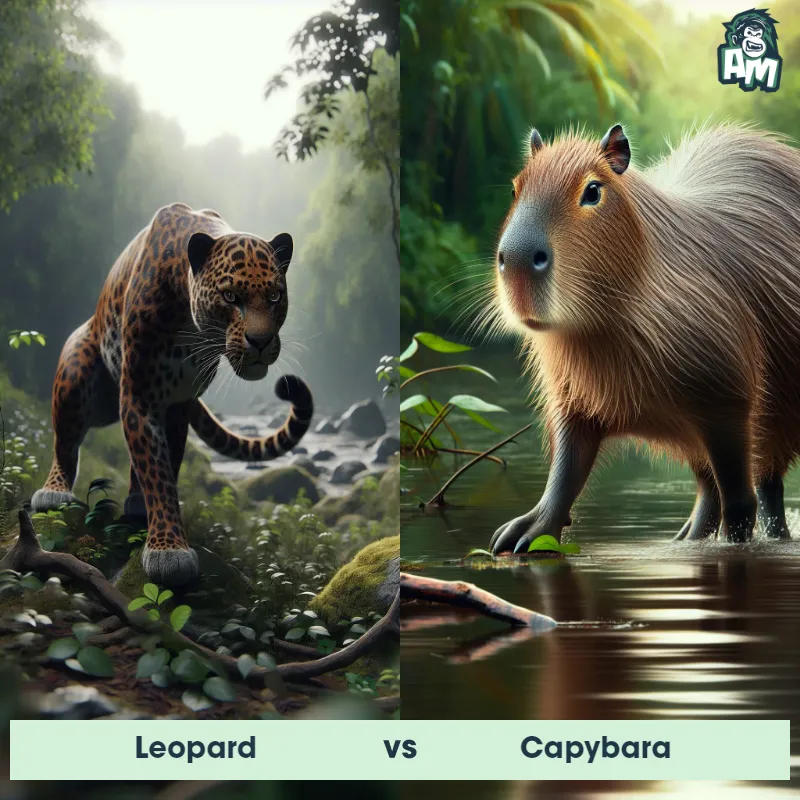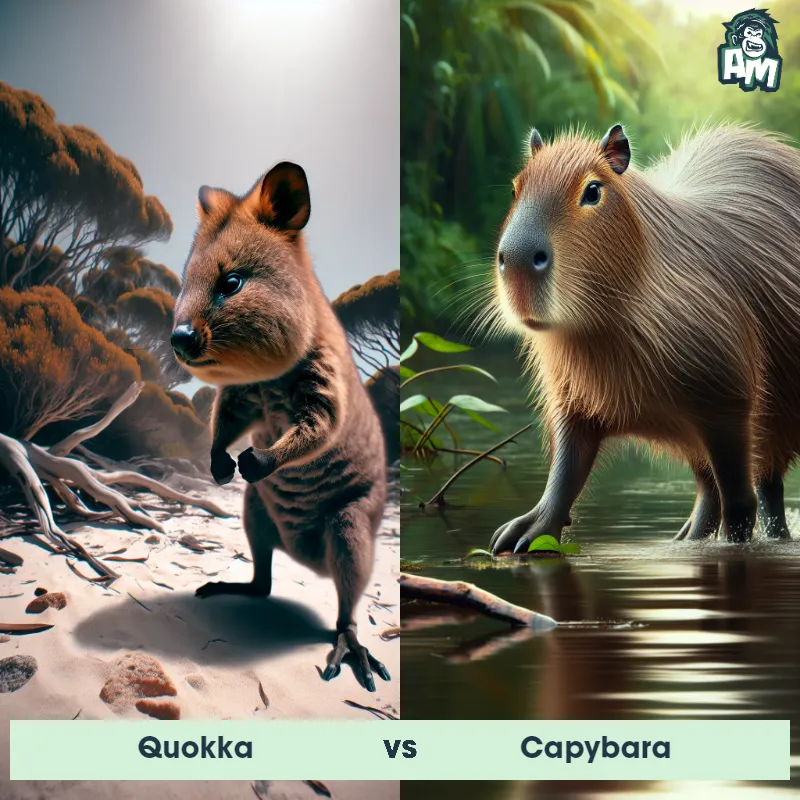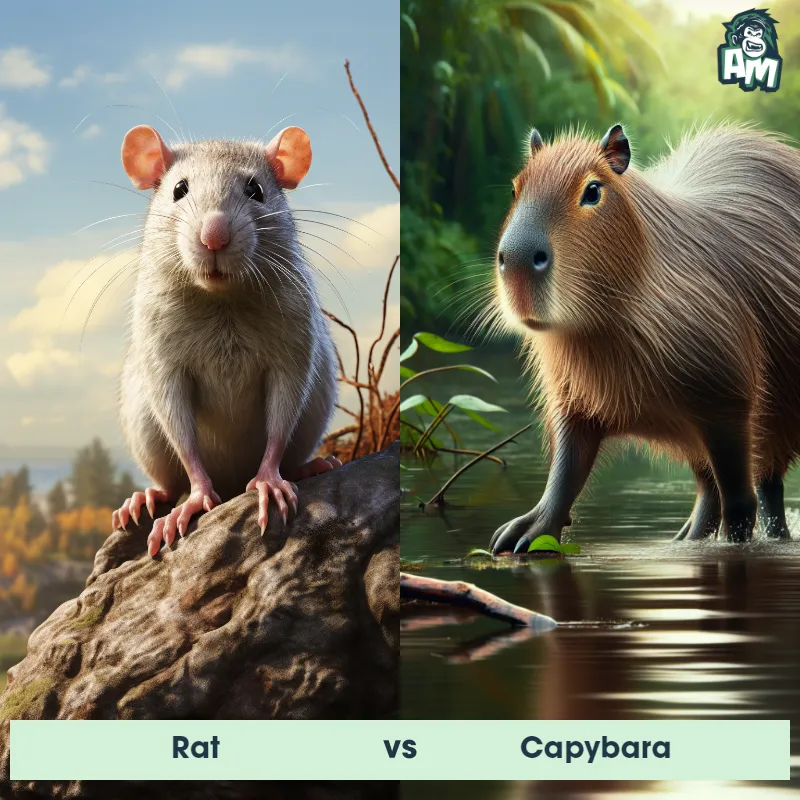The Capybara
The Capybara, also known as Hydrochoerus hydrochaeris, is the largest rodent in the world. They are semiaquatic mammals native to South America, particularly the grassy regions surrounding rivers, lakes, and swamps. Capybaras have a sturdy and barrel-shaped body with short, powerful legs. They are covered in dense, coarse hair that ranges in color from reddish-brown to golden-brown. Capybaras have a large head, small ears, and a blunt snout. They possess webbed feet and can swim underwater for several minutes, thanks to their ability to close their nostrils and ears. These social animals are known for forming close-knit groups, called herds, consisting of multiple males and females, led by a dominant male. They communicate through a variety of vocalizations and scent marking.
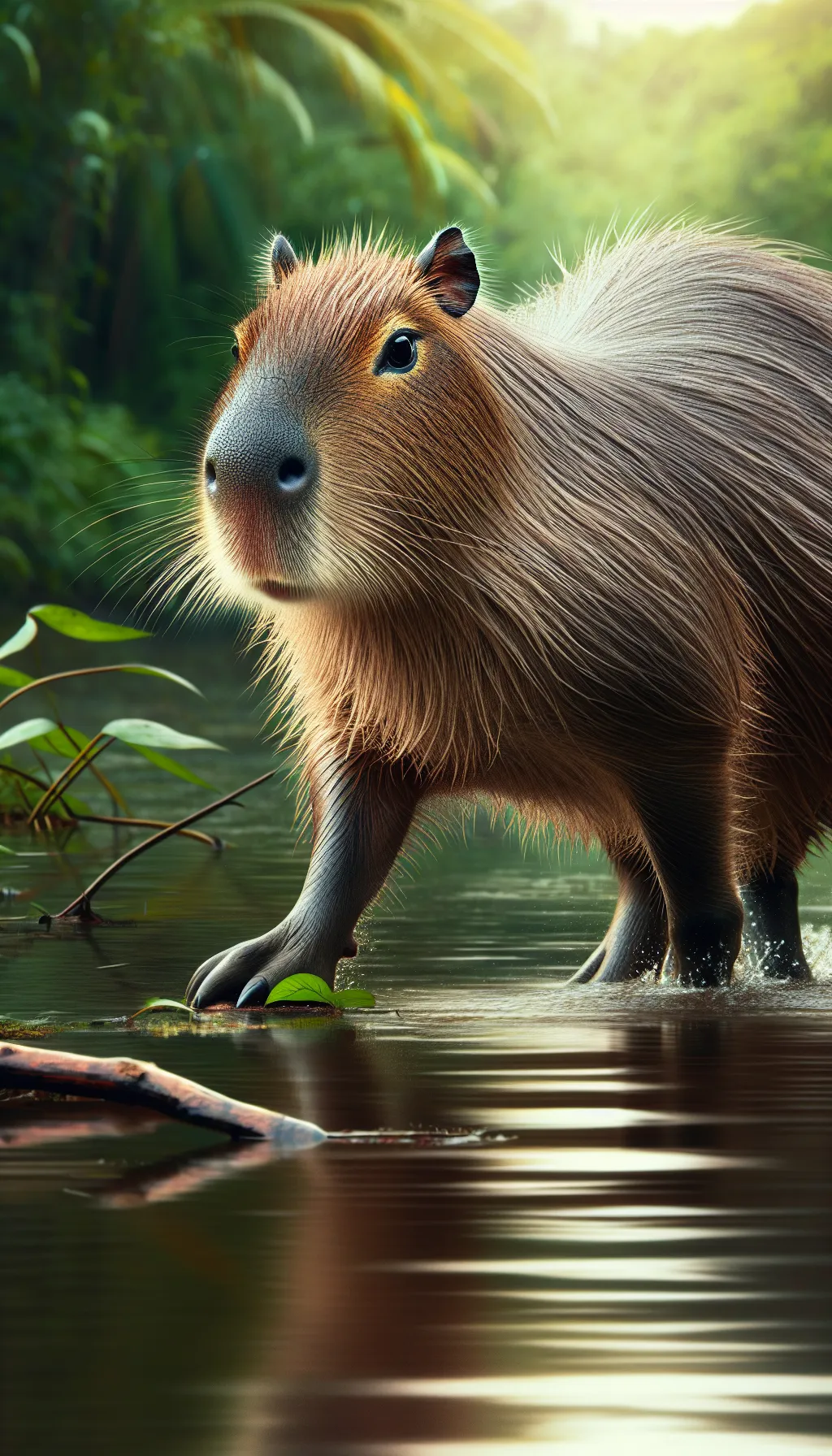
| Capybara | |
|---|---|
| Size | About 1.2 meters (3.9 feet) in length |
| Weight | Around 50-65 kilograms (110-143 pounds) |
| Speed | 22 mph (35 km/h) |
| Key Strength | Powerful jaws and strong legs for defense |
| Biggest Weakness | Less agile on land compared to in water |
| Scientific Name | Hydrochoerus hydrochaeris |
| Family | Caviidae |
| Habitat | Semi-aquatic, found in wetlands and grassy areas near water bodies. |
| Geography | Native to South America, specifically found in countries such as Brazil, Venezuela, Colombia, and Argentina |
| Diet | Herbivorous, primarily feeding on grasses and aquatic plants. |
| Lifespan | 10 years - 12 years |

The Capybara
The Capybara, also known as Hydrochoerus hydrochaeris, is the largest rodent in the world. They are semiaquatic mammals native to South America, particularly the grassy regions surrounding rivers, lakes, and swamps. Capybaras have a sturdy and barrel-shaped body with short, powerful legs. They are covered in dense, coarse hair that ranges in color from reddish-brown to golden-brown. Capybaras have a large head, small ears, and a blunt snout. They possess webbed feet and can swim underwater for several minutes, thanks to their ability to close their nostrils and ears. These social animals are known for forming close-knit groups, called herds, consisting of multiple males and females, led by a dominant male. They communicate through a variety of vocalizations and scent marking.
Fun Fact: Despite being herbivores, Capybaras have unique digestive systems that allow them to efficiently process food, including tough and fibrous plant material. Their large cecum— a section of the digestive tract— contains a rich population of microorganisms that help break down cellulose and extract nutrients from their plant-based diet.
| Capybara | |
|---|---|
| Size | About 1.2 meters (3.9 feet) in length |
| Weight | Around 50-65 kilograms (110-143 pounds) |
| Speed | 22 mph (35 km/h) |
| Key Strength | Powerful jaws and strong legs for defense |
| Biggest Weakness | Less agile on land compared to in water |
| Scientific Name | Hydrochoerus hydrochaeris |
| Family | Caviidae |
| Habitat | Semi-aquatic, found in wetlands and grassy areas near water bodies. |
| Geography | Native to South America, specifically found in countries such as Brazil, Venezuela, Colombia, and Argentina |
| Diet | Herbivorous, primarily feeding on grasses and aquatic plants. |
| Lifespan | 10 years - 12 years |
Capybara Matchups
We use AI to simulate matchups between the Capybara and other animals. Our simulation considers size, strength, and natural predatory behaviors to determine the most likely outcome.
Capybara: Diet, Predators, Aggression, and Defensive Behaviors
What do Capybaras eat?
Capybaras are herbivores, primarily feeding on grasses, aquatic plants, and fruits. They are known to graze on a variety of vegetation, including aquatic vegetation near rivers and lakes.
Do Capybaras have any predators?
Yes, Capybaras have several predators in the wild, including jaguars, anacondas, ocelots, and caimans. They are vulnerable to these predators, especially when they are young or if they are isolated from the group.
Are Capybaras aggressive?
Capybaras are generally peaceful and social animals. They are known to be docile and non-aggressive towards other animals and humans. However, they may show aggression towards each other during territorial disputes or mating season.
Do Capybaras fight?
Capybaras prefer to resolve conflicts through vocalizations and posturing rather than physical fights. However, they may engage in physical altercations, such as kicking or biting, if necessary to establish dominance or defend themselves.
How do Capybaras defend themselves?
Capybaras use various tactics to defend themselves from predators, including vigilance, speed, and group behavior. They rely on their strong sense of smell and hearing to detect threats early and communicate with other group members to coordinate their escape strategies.
What is the biggest weakness of Capybaras in a fight?
Despite their social nature and cooperative behavior, Capybaras are relatively slow and lack agility compared to some of their predators. This makes them vulnerable in situations where they have to defend themselves from quick and agile predators that can outmaneuver them in a fight.
Fun Fact: Capybaras are highly compatible with other species and often form symbiotic relationships. They can often be observed sharing resting sites with caimans and forming mutualistic alliances with birds called wattled jacanas. While the capybaras enjoy the protection from predators that the jacanas provide by perching on their backs, the birds benefit from the insects that are stirred up by capybara movement.
Fun Fact: Capybaras are incredible swimmers and can stay submerged for up to five minutes, gracefully maneuvering through the water. Their eyes, ears, and nostrils are positioned on top of their head, allowing them to keep most of their body submerged while maintaining awareness of their surroundings. This adaptation helps them evade predators and efficiently search for tasty aquatic plants.



